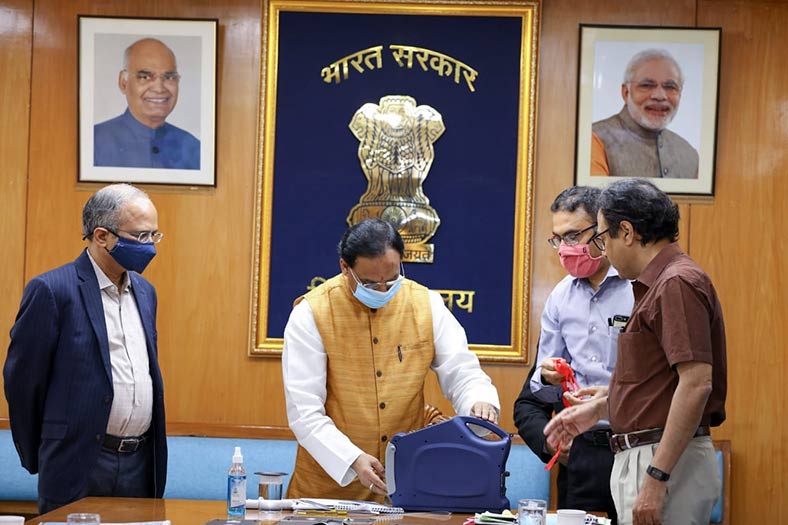Perfect climate to keep airport running
Passenger comfort along with energy costs is an important factor to run an airport today
Airports are places where there will be large gatherings of people around the clock. Hence, indoor air quality plays an important role in comfort and productivity besides safeguarding health of the passengers.
Airport ventilation and coolingAirport ventilation and cooling are vitally important to keep an airport running. The cost of ownership is something every airport in India would strive to keep at minimal levels to attain profitability. Sudarshan Ananth, Territory Vice President and Business Head – HVAC & Transport, India Climate Business Unit, Ingersoll Rand explains that their new range of product in applied and unitary streams continue to deliver best-in-class experience in terms of safety, energy efficiency and comfort to airport operators and passengers.
Trane, an Ingersoll Rand brand, is one of the leading global providers of indoor comfort systems and solutions for commercial, residential and industrial applications.
While talking as to how Trane helps airports in achieving energy efficiency, Mr Ananth says, “Trane AHU provides a clean air and maintains the necessary Indoor air quality requirements. Using its integrated solutions approach, Trane helps reduce energy use and costs while meeting high levels of comfort and performance critical to business operations of its customers.”
Airports tend to have a heavy skew on large latent loads surge due to passenger transits, which needs an intelligent HVAC controls to be integrated with HVAC system to regulate the airflow and maintain comfortable temperature at all times. Trane also helps meet both the tangible and intangible requirements of the operators as well as the passengers.Danfoss also plays a pivotal role by reducing the energy costs for airport entities across India. “Solutions from our power electronics portfolio such as the variable frequency drives, which essentially are retrofitted in air conditioning(air handling units) and baggage conveyors systems have a positive impact on the energy savings hugely,” says Kamal Singh, Vice President – Power Electronics Division, Danfoss India. “Danfoss is a major enabler in the energy-efficiency story of various airports across India, including New Delhi, Mumbai, Chennai, Goa and Hyderabad.”
Demand for HVAC products Airports Authority of India reports that nearly 25 per cent of existing capacity will get added over next 4 -5 years in terms of aircraft movements, passengers and freight at all Indian airports, respectively. “With new greenfield airports being planned in major cities, there is a continuous capacity expansion needed to achieve such a high growth rates,” says Mr Ananth. “The trends in HVAC for airport sector industry is achieving better energy efficiency, maintaining a high reliability and accuracy in the temperature and humidity parameters.”
According to Mr Singh, “While the current demand is stable, with a large number of airports scheduled to be in the pipeline, we are well positioned to supply for the impending demand. We already have superior drives such as FC 102 and FC 101 which can help reduce energy consumption at these upcoming facilities considerably.”
The industry is witnessing fresh impetus from the Indian government in this sector with their plans to connect Tier-2 and Tier-3 cities by upgrading many of the airstrips. “There will significant need for next generation HVAC system that can address the needs of the passengers and operators in terms of delivering reliable energy efficiency and comfort at optimised operating cost for decades,” adds Mr Ananth.
Essential products and solutions for airport ventilation and coolingDanfoss rules the industry with its most befitting products like variable frequency drives FC 102 and FC 101 which enable considerable energy savings and precision temperature control for the halls and rooms in the airports. The drives primarily control the operation of air handling units (AHUs), pumps, cooling towers and other ventilation systems in the airport, improving travellers’ comfort and save energy to the tune of 20-25 per cent.
Then there is Trane, one of the world’s largest independent HVAC companies with over century long experience in delivering world-class products and services to some of best airports in the world. “We understand the importance associated with critical conditions of airport ventilation,” adds Mr Ananth.
He also talk about controlling humidity at the airports. “There is much more than temperature in HVAC,” opines Mr Ananth. “The most important part of the HVAC is maintaining the humidity and indoor air quality. Humidity in the airport should be maintained at an optimal level to be comfortable for the passengers. Increase or decrease in humidity beyond the specified level can cause health hazards.”
Trane controls can monitor the indoor air quality with appropriate sensors and recommend the necessary actions. The amount of fresh air that gets circulated inside the airport reduces the concentration of carbon dioxide. Trane sensors can accurately sense this and keep providing optimal fresh air.
Challenges in airport infrastructureSome of the concerns of stakeholders in this space when it comes to HVAC, include high system reliability, minimum interference with voice and data communication systems, effective integration into the building automation system (BAS) and maximum energy savings. The system reliability is ensured by the IP55 enclosure solution of these drives which means there is minimal contact with dust and moisture in the air – one of the commonest causes of drives failing.
According to Mr Singh, “Minimum interference with the airport’s voice and data communications is vital for the safety and security of travellers. This is ensured by providing the C-1 category of electro-magnetic interference (EMI) filters in these drives which reduce signals and improve reliability.
Since airport has multi-zone environment that covers passenger, cargo and airplanes with associated equipment, providing safe, comfortable and efficient solutions that covers all three zones requires precise understanding of deliverable expected in each case. Even the product solutions should be fire retardant and accident proofed. “From services perspective, key challenge that must be addressed is quick responsiveness, especially airport cooling while providing maintenance in high secure areas,” explains Mr Ananth. “Trane scores high points on all these counts in airport infrastructure whether in delivering safe and efficient products or in providing quick response to service requirement of heating, ventilation and cooling.”
Indian airports against best of the worldThere are very few airports from India enlisted in SKYTRAX’s ranking of world best airports. However, Mr Singh seems very optimistic about the future of Indian airports. He opines, “The general view is that Indian airports are only functional and hence lack aesthetic appeal. Owing to the high operational and ownership costs, airports struggle to invest in other areas that position it among top global airports. With more energy savings and low cost of ownership which can be achieved through automated technologies, Indian airports will be better equipped to match global standards set by their foreign counterparts.”
In the past, travelling by plane was considered a luxury and lacked economy of scale in terms of passenger footfalls or air cargo movement. With recent development in economy and trade, flying and use of airport infrastructure has become a necessary catalyst for faster people and goods connect hence has seen multifold increase in its usage.
Mr Ananth belives that with more airports under modernisation, in next couple of years, India will boast of half a dozen world-class airports. India is catching up very fast — Delhi, Mumbai and Bangaluru Airports have already achieved global recognition and benchmark for their infrastructure. _____________________________________
The trends in HVAC for airport sector industry is achieving better energy efficiency, maintaining a high reliability and accuracy in the temperature and humidity parameters.
Sudarshan Ananth, Territory Vice President and Business Head – HVAC & Transport, India Climate Business Unit, Ingersoll Rand_________________________________________
While the current demand is stable, with a large number of airports scheduled to be in the pipeline, we are well positioned to supply for the impending demand.
Kamal Singh, Vice President – Power Electronics Division, Danfoss India.
14
Cookie Consent
We use cookies to personalize your experience. By continuing to visit this website you agree to our Terms & Conditions, Privacy Policy and Cookie Policy.









